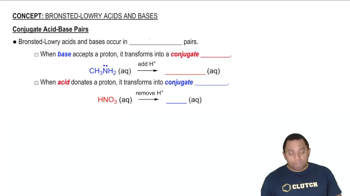Here are the essential concepts you must grasp in order to answer the question correctly.
Buffer Solutions
Buffer solutions are mixtures that resist changes in pH when small amounts of acid or base are added. They typically consist of a weak acid and its conjugate base or a weak base and its conjugate acid. The effectiveness of a buffer is determined by the pKa of the weak acid relative to the desired pH, as well as the concentrations of the acid and base components.
Recommended video:
Henderson-Hasselbalch Equation
The Henderson-Hasselbalch equation relates the pH of a buffer solution to the pKa of the weak acid and the ratio of the concentrations of the conjugate base to the weak acid. It is expressed as pH = pKa + log([A-]/[HA]). This equation is crucial for determining the appropriate conjugate acid-base pair to achieve a specific pH in a buffer solution.
Recommended video:
Henderson-Hasselbalch Equation
Conjugate Acid-Base Pairs
Conjugate acid-base pairs consist of an acid and its corresponding base, which differ by a proton (H+). For example, in the pair HSO4- (acid) and SO42- (base), HSO4- can donate a proton to form SO42-. The choice of conjugate pairs is essential for buffer preparation, as the pKa of the acid should be close to the desired pH for optimal buffering capacity.
Recommended video:
Conjugate Acid-Base Pairs
 Verified step by step guidance
Verified step by step guidance

